In any living cell, NAD+ (nicotinamide adenine dinucleotide) plays an irreplaceable role as a key coenzyme in energy metabolism. NMN
In recent years, more and more studies have confirmed that increasing the level of NAD+ in organisms has multiple health effects such as extending life span and improving aging symptoms.
NMN (nicotinamide mononucleotide) is a direct precursor of NAD+, which means that it can be converted into NAD+ in a single step reaction in the cell.
Therefore, NMN supplementation is a highly bioavailable way to enhance NAD+, and various brands and doses of NMN supplements have appeared on the market.
1. What exactly is NMN?
NMN is short for Nicotinamide Mononucleotide, and its Chinese name is “nicotinamide mononucleotide”. From the chemical structure, β-Nicotinamide Mononucleotide composed of a phosphate group, a ribose and a nicotinamide base.
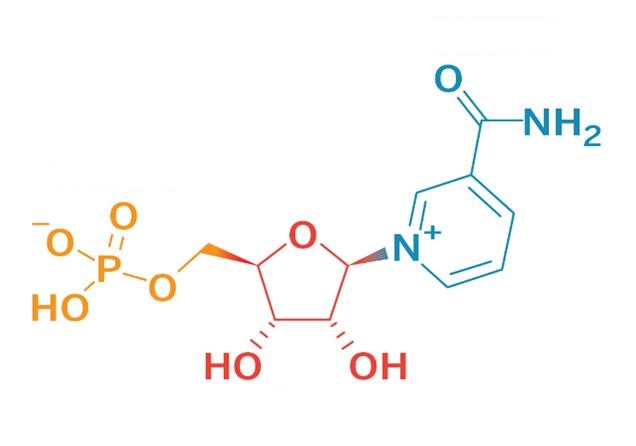
2. How does NMN work in the body?
With age, the level of NAD+ in the body gradually decreases, so people hope to increase the level of NAD+ by supplementing with NMN.
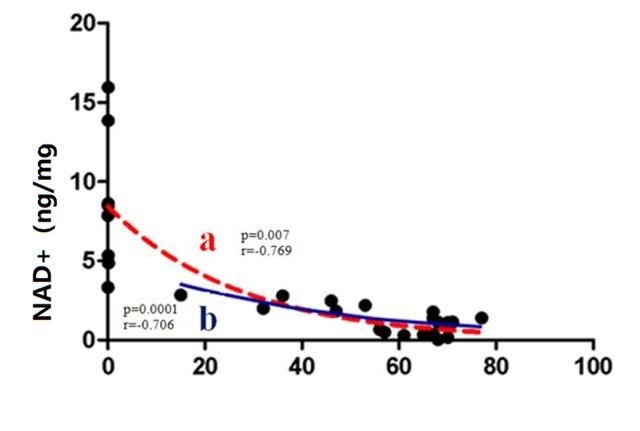
In 2016, Professor Shinichiro Imai’s research team at the University of Washington fed mice NMN (300mg/kg) and found that their plasma NMN levels rose rapidly within 10 minutes, and then quickly fell back. At the same time, the level of NAD+ in plasma also gradually increased, which proved that NMN can rapidly absorbed by organisms and converted into NAD+.
In 2019, Shinichiro Imai’s team further found that NMN absorption mainly carried out in the small intestine, and a protein called “S1c12a8” in small intestine cells responsible for “transporting” NMN into the blood.
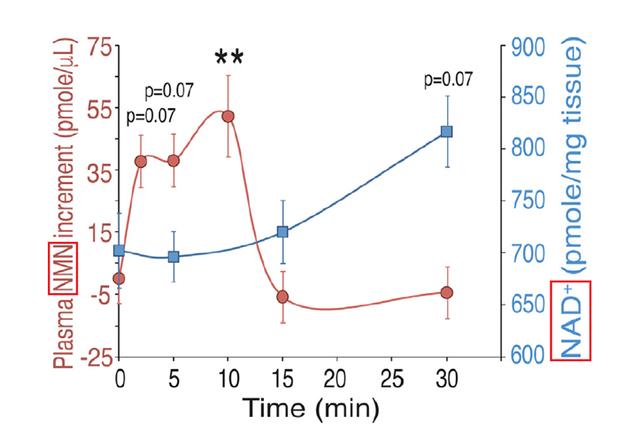
In vivo, one of the key roles of NAD+ is to help produce ATP (adenosine triphosphate). As the “energy currency” shared by all living things, ATP has many synthetic paths, the most important of which is the “tricarboxylic acid cycle” that oxidizes and decompositions glucose, and NAD+ and its reducing state NADH play a key role in electron transport.
NAD+ is not only a key coenzyme in the process of energy metabolism, but also has various biochemical interactions with more than 400 proteins, among which a family of proteins called Sirtuins plays a key regulatory role in cell metabolism, inflammation, damage repair and other aspects.
The full name of Sirtuins is “Silence Information Regulator”, which composed of seven enzymes Sirt1-Sirt7. They all require NAD+ as a coenzyme to function.
Back in 2011, scientists found that activating Sirt1 protein in mice reversed insulin resistance caused by a high-fat diet, and this achieved by orally supplementing β-Nicotinamide Mononucleotide to boost NAD+.
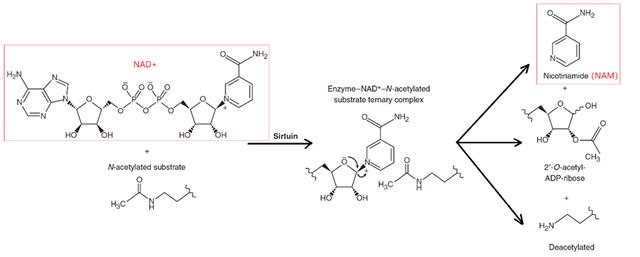
In addition to Sirtuins, Poly(ADP-ribose) polymerase (PARPs), a key protein that controls DNA repair, also regulated by NAD+.
When a cell’s DNA broken by an external action, such as chemicals or radiation, PARPs bind to the DNA and, with the help of other DNA repair enzymes, begin to synthesize new strands of DNA.
3. How to ingest NMN?
Many common foods in life contain NMN, but the content is relatively low.
Obviously, the amount of NMN we eat directly from our diet is not enough to affect its levels in the human body. In fact, NMN in humans mainly synthesized by two substances, one is NAM (niacinamide) and the other is NR (niacinamide riboside).

After NMN is synthesized, it only takes one more step to become NAD+ and exert its biological effects. “Used up” NAD+ is not “thrown away” by the body, but is degraded into NAM and recycled.
This triangular cycle composed of NAM, NMN and NAD+ is also known as the “salvage” pathway of NAD+ synthesis and is the most important way to maintain the level of NAD+ in the human body.
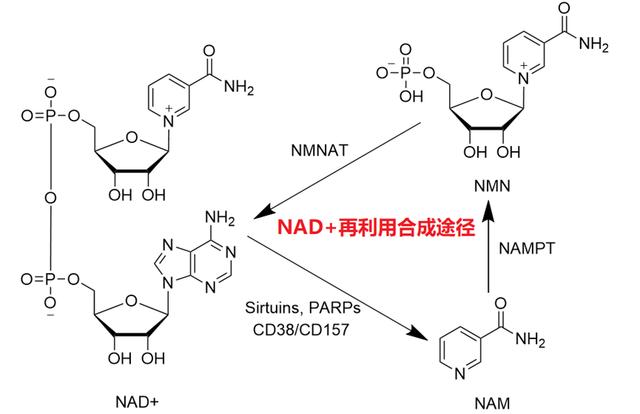
In summary, NMN is a substance that occurs naturally in the human body and is a direct precursor to NAD+.
Supplementing NMN can increase the level of NAD+ in the body, and help cells produce energy (ATP),
but also activate a series of proteins that consume NAD+, achieve DNA repair, maintain cell health and other effects.
At present, a large number of studies have been conducted on the specific effects of NMN supplementation, and the data of human clinical trials are gradually accumulating.
With the continuous efforts of scientists around the world, we will understand NMN more and more deeply, and we will use it more scientifically and effectively to improve human health.
References:
- 1. Massudi, H., Grant, R., Braidy, N., Guest, J., Farnsworth, B., & Guillemin, G. J. (2012). Age-associated changes in oxidative stress and NAD+ metabolism in human tissue. PloS one, 7(7), e42357.
- 2. Mills, K. F., Yoshida, S., Stein, L. R., Grozio, A., Kubota, S., Sasaki, Y., Redpath, P., Migaud, M. E., Apte, R. S., Uchida, K., Yoshino, J., & Imai, S. I. (2016). Long-Term Administration of Nicotinamide Mononucleotide Mitigates Age-Associated Physiological Decline in Mice. Cell metabolism, 24(6), 795–806.
- 3. Grozio, A., Mills, K. F., Yoshino, J., Bruzzone, S., Sociali, G., Tokizane, K., Lei, H. C., Cunningham, R., Sasaki, Y., Migaud, M. E., & Imai, S. I. (2019). Slc12a8 is a nicotinamide mononucleotide transporter. Nature metabolism, 1(1), 47–57.
- 4. Penberty TW, Kirkland J. Niacin. In: Erdman JW, MacDonald IA, editors. Present knowledge in nutrition: Wiley Publishers; 2012.
- 5. Yoshino, J., Mills, K. F., Yoon, M. J., & Imai, S. (2011). Nicotinamide mononucleotide, a key NAD(+) intermediate, treats the pathophysiology of diet- and age-induced diabetes in mice. Cell metabolism, 14(4), 528–536.
- 6. North, B. J., & Verdin, E. (2004). Sirtuins: Sir2-related NAD-dependent protein deacetylases. Genome biology, 5(5), 224.




